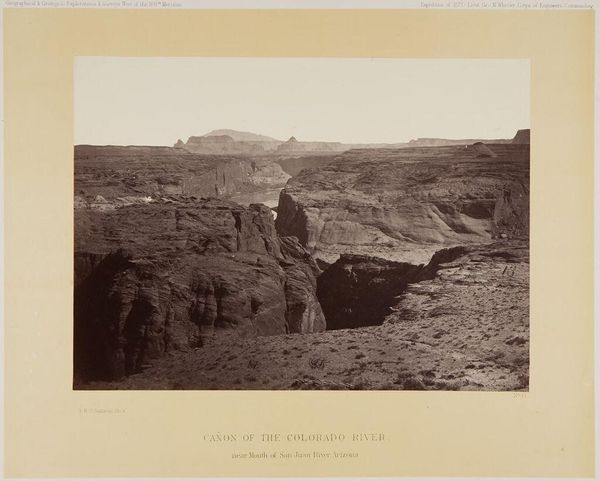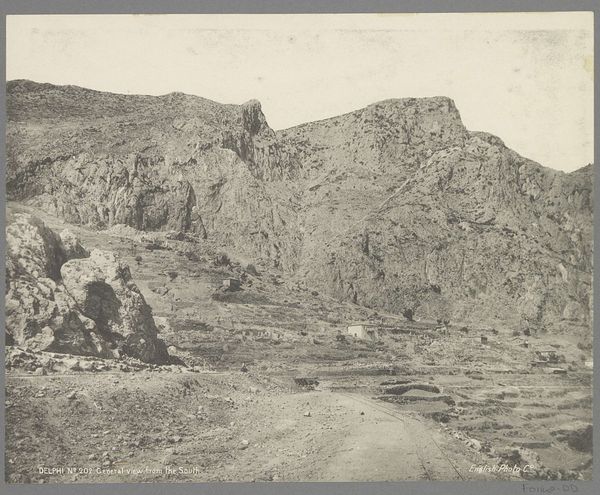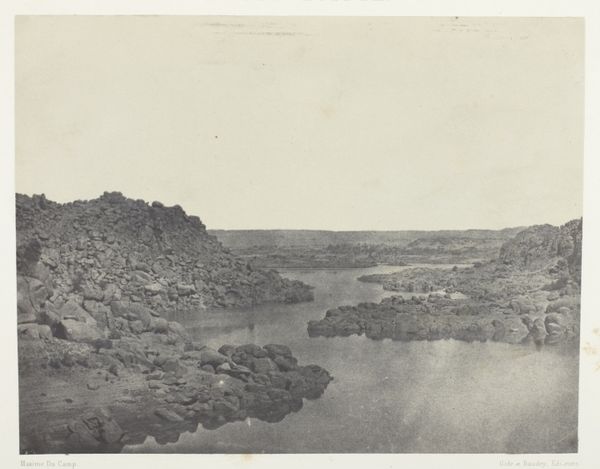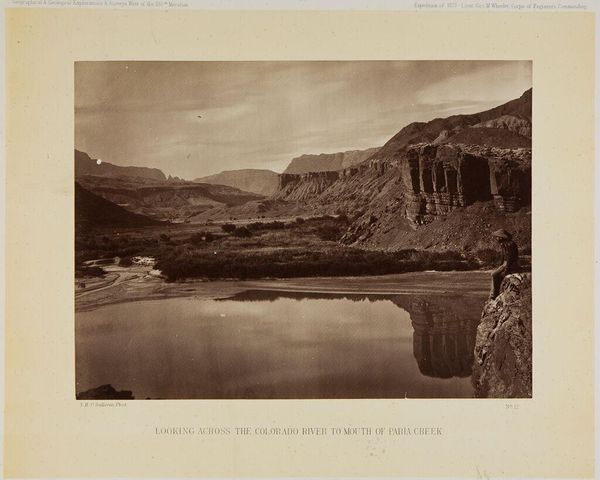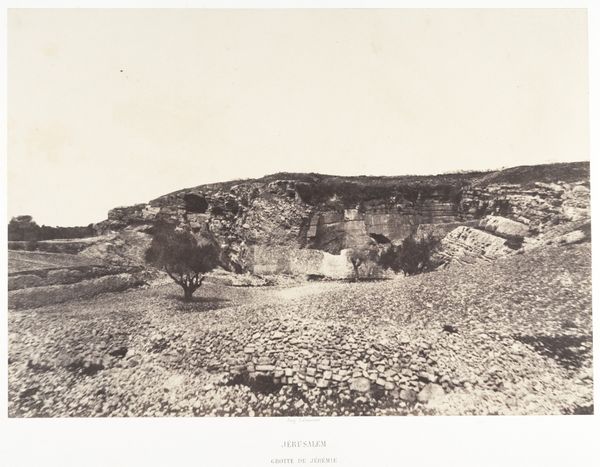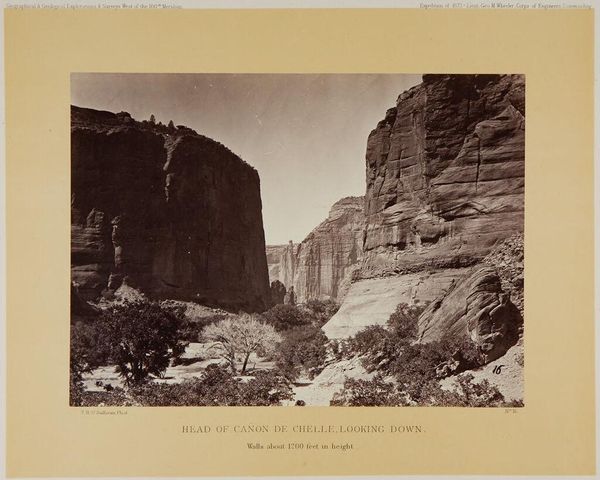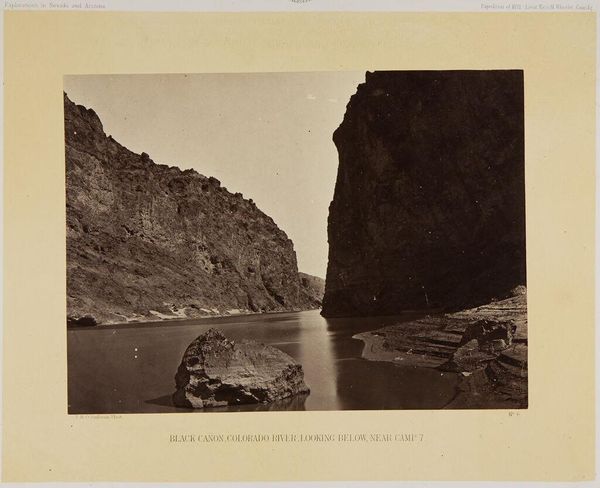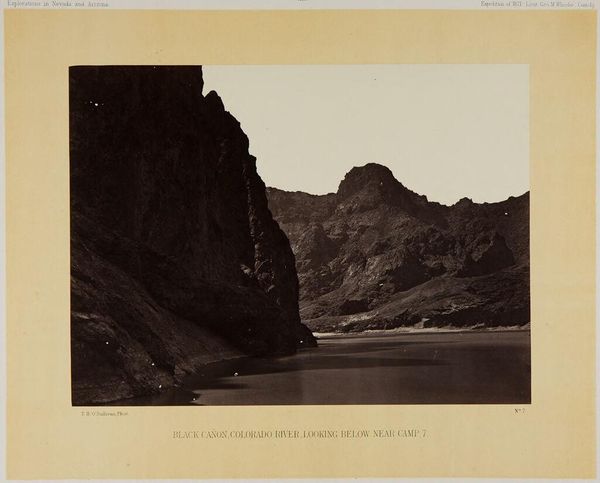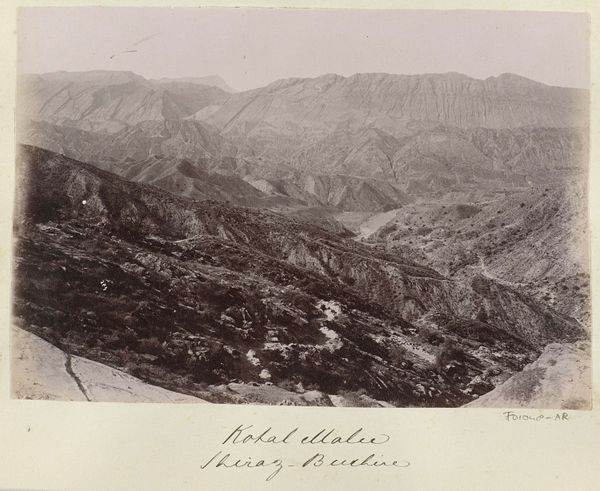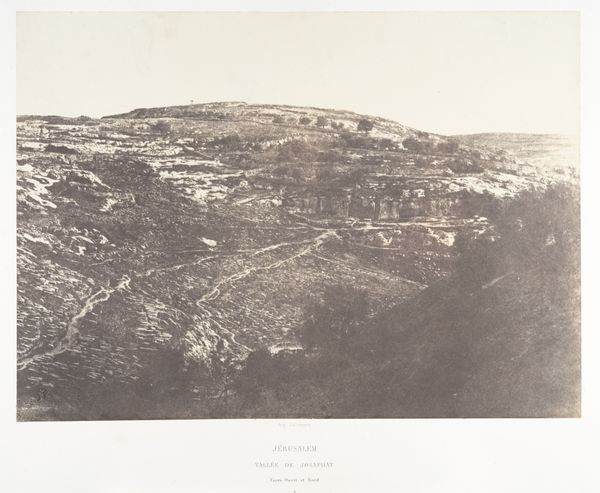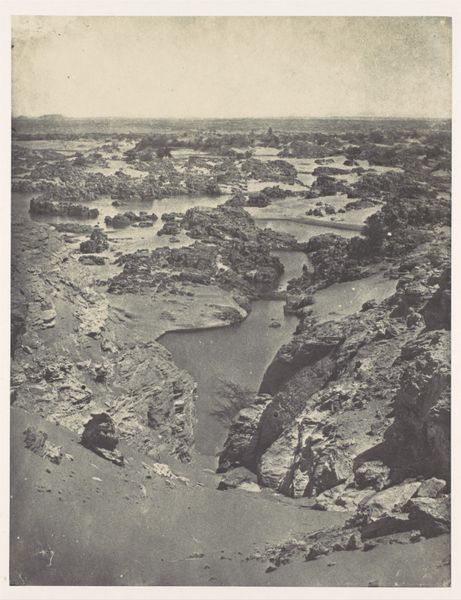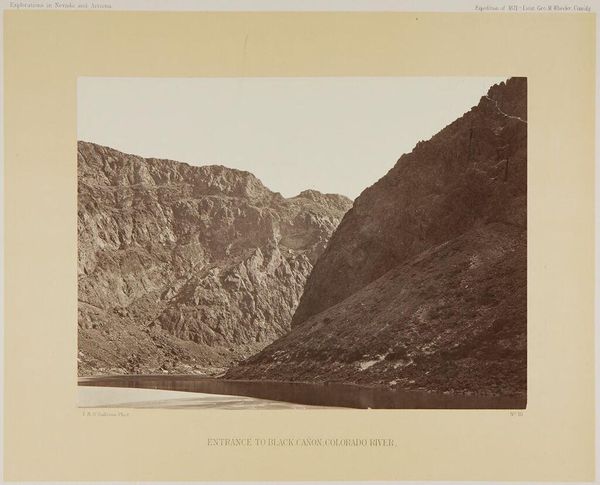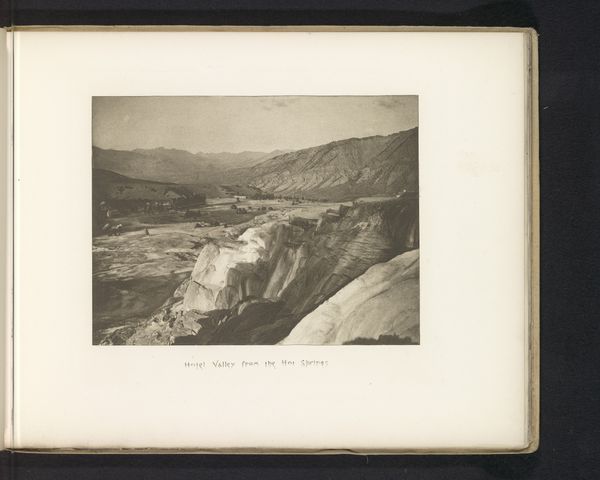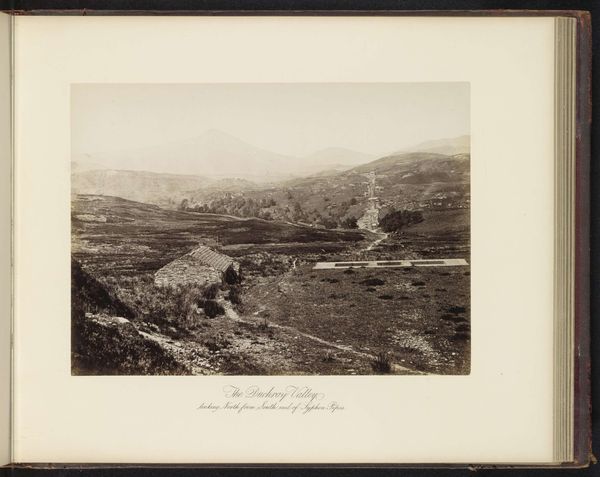
photography, albumen-print
#
landscape
#
photography
#
orientalism
#
albumen-print
Dimensions: height 218 mm, width 276 mm, height 468 mm, width 559 mm
Copyright: Rijks Museum: Open Domain
Curator: Félix Bonfils' photograph, taken sometime between 1867 and 1877, captures a view of the ruins of Jericho. This albumen print, titled "Gezicht op de ruïnes van Jericho," forms part of the Rijksmuseum's collection. Editor: A muted landscape, like a dream fading. There’s a subtle layering here—foreground scrub, then these crumbling stone dwellings against the hills... and finally a mountain range blurring on the horizon. A somber scene; history made visible by decay. Curator: The sepia tones accentuate the timeless quality of this historical site. Bonfils was known for his Orientalist photographs, often depicting scenes of the Middle East for a European audience eager for images of distant lands. He documents the cultural memory of this ancient landscape. Editor: "Orientalist" casts a long shadow, doesn't it? While I admire Bonfils' meticulous detail, I can't help but wonder about his perspective. Was he an archaeologist, poet, or... a colonial observer crafting a specific narrative about this region? Curator: That's an important question. The very act of photographing, particularly in that era, was an act of interpretation. Bonfils' photographs were widely circulated, shaping European perceptions of the East. The ruins themselves carry symbolic weight; Jericho, mentioned frequently in religious texts, representing conquest, destruction, and ultimately, faith. Editor: You see ruins as symbols, but to me they're always ghosts of the everyday. These structures must've sheltered generations; ordinary people living out their lives amidst extraordinary historical events. I imagine children playing games between the stones... and now only echoes. The landscape seems to have silently absorbed all that transpired within. Curator: Consider how the albumen print itself ages, fading slowly with time. This mirrors the very process of decay documented in the image, an intersection of the fleeting moment and the endurance of a civilization, captured and preserved by light. Editor: Almost like a self-fulfilling prophecy. Bonfils creates a static view of ruin which then gradually erodes... Curator: Precisely. The print bears witness to transience, prompting us to reflect on history, perspective, and the complex layers embedded within the simplest landscape. Editor: This muted echo invites reflection far beyond what the immediate document seems to provide at first.
Comments
No comments
Be the first to comment and join the conversation on the ultimate creative platform.
